
Legio XIV Gemina was a legion of the Imperial Roman army, levied by Julius Caesar in 57 BC. The cognomen Gemina (Twinned) was added when the legion was combined with another understrength legion after the Battle of Actium. The cognomen Martia Victrix was added following their service in the Pannonian War c. AD 9 and the defeat of Boudicca in AD 61. The emblem of the legion was the Capricorn, as with many of the legions levied by Caesar.

Legio VIII Augusta was one of the oldest legions of the Imperial Roman army.
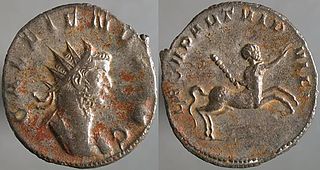
Legio II Parthica was a legion of the Imperial Roman army founded in AD 197 by the emperor Septimius Severus, for his campaign against the Parthian Empire, hence the cognomenParthica. The legion was still active in the beginning of the 5th century. The legion's symbol was a centaur.

The gens Flavia was a plebeian family at ancient Rome. Its members are first mentioned during the last three centuries of the Republic. The first of the Flavii to achieve prominence was Marcus Flavius, tribune of the plebs in 327 and 323 BC; however, no Flavius attained the consulship until Gaius Flavius Fimbria in 104 BC. The gens became illustrious during the first century AD, when the family of the Flavii Sabini claimed the imperial dignity.
Legio II Armeniaca was a legion of the late Roman Empire. Its name could mean it was garrisoned in the Roman province of Armenia, but later, together with its twin, I Armeniaca, it was moved into the field army as a pseudocomitatensis legion. The legion is reported to have built a camp in Satala. According to Ammianus Marcellinus, in 360 AD. II Armeniaca was stationed in Bezabde with II Flavia Virtutis and II Parthica, when Shapur II besieged and conquered the city, killing many of the inhabitants. The II Armeniaca however, survived, since it is cited in the Notitia Dignitatum as being under the command of the Dux Mesopotamiae.
The comitatenses and later the palatini were the units of the field armies of the late Roman Empire. They were the soldiers that replaced the legionaries, who had formed the backbone of the Roman military since the Marian reforms.

Legio V Macedonica was a Roman legion. It was probably originally levied in 43 BC by consul Gaius Vibius Pansa Caetronianus and Gaius Iulius Caesar Octavianus. It was based in the Balkan provinces of Macedonia, Moesia and Dacia. In the Notitia Dignitatum records from beginning of the fifth century, the legion was still stationed in Dacia, with detachments stationed in the east and Egypt.
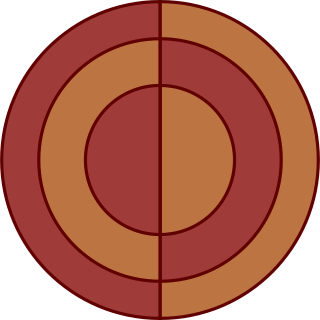
The Legio I Maximiana was a comitatensis Roman legion, probably created in the year 296 or 297 by the Emperor Diocletian. The legion was named after Maximianus, a colleague of Diocletian. The I Maximiana was formed together with II Flavia Constantia, to garrison the newly created province Thebaidos, in Aegyptus. As well as protect it from neighboring tribes. The legion is also known as Maximiana Thebanorum or Thebaeorum. Since no Legio I Maximiana is listed as being stationed at Thebes in the Notitia Dignitatum, the designation is interpreted more broadly as of the Thebaid in general. The cognomen Maximiana originated from Maximian, Diocletian's colleague. In 354, I Maximiana was in Thrace, in the neighborhood of Adrianople.Thus it is likely that it fought in the Battle of Adrianople, in 378, when emperor Valens was defeated by Goths. According to Notitia Dignitatum, the I Maximiana Thebanorum was still under Thracian command at the beginning of the 5th century, while the I Maximiana was in Philae, under the dux Thebaidos. There exists also a Theban Legion in the legend of Saint Maurice from the 5th century. According to that tradition, this was a legion from Thebes that was ordered to move by Maximian. Thus it is sometimes related to I Maximiana Thebanorum. However, according to tradition, the Theban Legion of Saint Maurice was martyred in 286, while the I Maximiana was not founded until ten years later.

The Legio II Flavia Constantia was a comitatensis Roman legion, created by Diocletian or Galerius, probably in the years 293, 296 or 297.

The Siege of Amida was a military investment of the Roman fortified frontier city of Amida by the Sasanian Empire. It took place in AD 359 when the Sasanian army under king Shapur II invaded the eastern provinces of the Roman Empire. Shapur wanted to exploit the absence of the Roman Emperor Constantius II who was overseeing affairs in the western part of the Empire. The city fell, but the strategic gain was little.
Legio II Isaura was a pseudocomitatensis Roman legion, levied no later than under Diocletian, and possibly already present under Probus. As their name suggests, II Isaura and its twin legion III Isaura were guarding the Isauria territory at the time of the Notitia Dignitatum, to defend it from the incursions of the mountain peoples. It is possible that in the beginning they were supported by I Isaura Sagittaria. According to Ammianus Marcellinus, in 360, they were stationed in Bezabde with II Armeniaca, and II Parthica, when the king of Persia, Shapur II besieged and conquered the city, killing many of the inhabitants.

Legio II Flavia Virtutis was a comitatensis Roman legion, levied by Emperor Constantius II (337–361), together with I Flavia Pacis and III Flavia Salutis.

Petulantes was an auxilia palatina of the Late Roman army.

Legio I Armeniaca was a pseudocomitatensis legion of the Late Roman Empire. The Legio I Armeniaca was probably founded in the late 3rd century by Julian the Apostate, although it could have been founded by Diocletian It is possible that the name of the legion could mean that it was originally part of the garrison of the Armeniac provinces, but the unit, together with its twin legion II Armeniaca, appears to have been included in the imperial field army. The legion was based in Bezabde until the Persians captured the area in 360. The Legion took part in Julian's invasion of the Sassanid Empire. The Notitia dignitatum records the legion as being under the command of the magister militum per Orientis around 400.
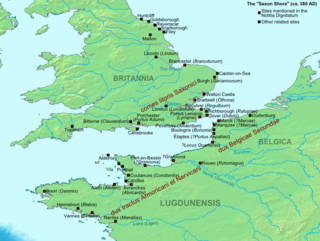
The Saxon Shore was a military command of the late Roman Empire, consisting of a series of fortifications on both sides of the Channel. It was established in the late 3rd century and was led by the "Count of the Saxon Shore". In the late 4th century, his functions were limited to Britain, while the fortifications in Gaul were established as separate commands. Several Saxon Shore forts survive in east and south-east England.

Singara was a strongly fortified post at the northern extremity of Mesopotamia, which for a while, as it appears from coins minted there, was occupied by the Romans as an advanced colony against the Persians. It was the camp of legio I Parthica.
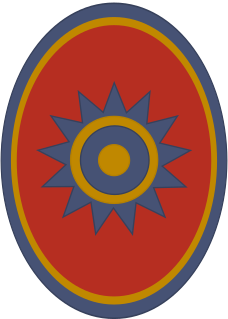
The Primani was a legio palatina of the Late Roman army, active in the 4th and 5th century.
Legio IVMartia was a legion of the Roman Empire, part of the Late Roman army. Its genesis is uncertain, but it probably existed in the time of Diocletian, and certainly in the time of Notitia Dignitatum. That document places the legion at Betthorus, modern El-Lejjun in Jordan, under the command of the Dux Arabiae. The place was in the civil jurisdiction of Palaestina Tertia.
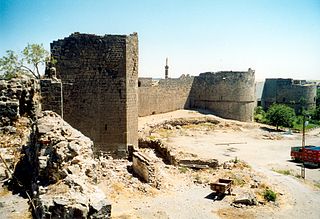
Legio V Parthica was a legion of the Roman Empire garrisoned in Amida, Mesopotamia, established by the Roman emperor Diocletian (284–305), who reorganized the eastern frontier. The legion is described by the historian Ammianus Marcellinus. The cognomen "Parthica" was an archaism, as the Parthian Empire was already replaced by the Sasanian Empire at the time of the establishment of the legion.














